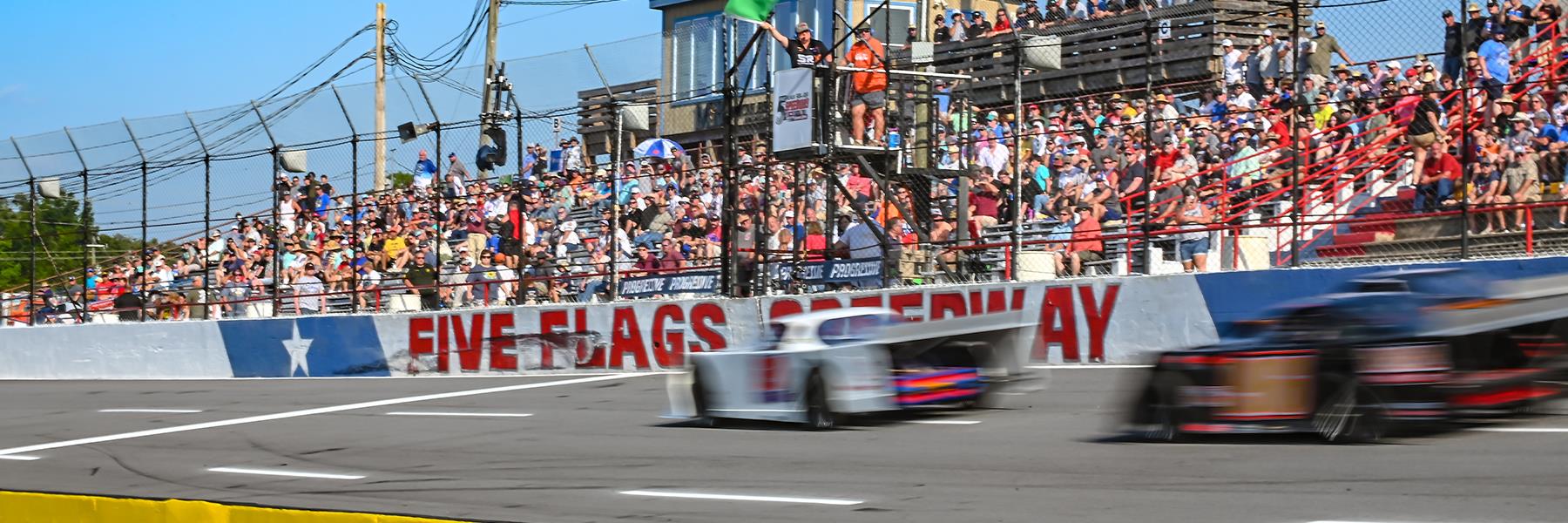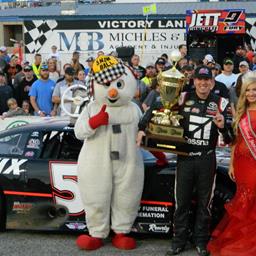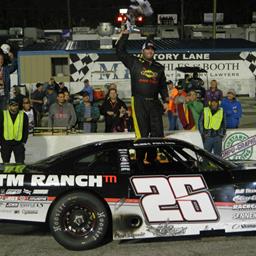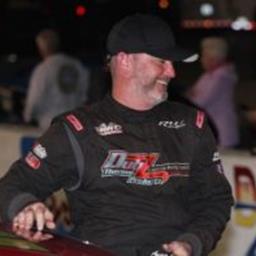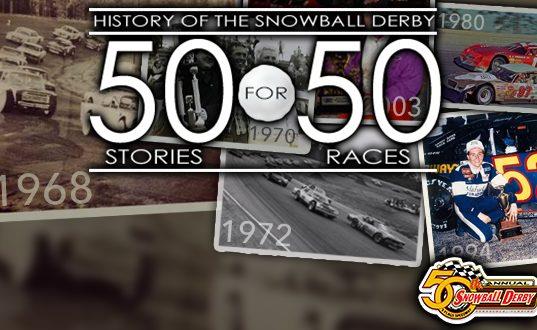
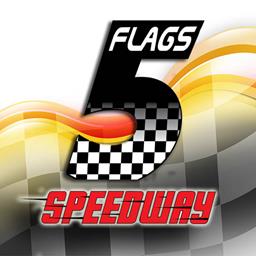
11/14/2017
Five Flags Speedway
50 for 50: Track Changes Over Time at Five Flags Speedway
 In 1953, a stock car racing facility located on Pine Forest Road in Pensacola, Florida opened for the first time. The facility, known as Five Flags Speedway, operated for several years before Tom Dawson purchased the track in 1968. It was Dawson who would change the shape of racing in Pensacola forever with his announcement about a big event to end the season in December. That race was the Snowball Derby. The purse for the first race was $4,500 and the winner’s take $1,000.
In 1953, a stock car racing facility located on Pine Forest Road in Pensacola, Florida opened for the first time. The facility, known as Five Flags Speedway, operated for several years before Tom Dawson purchased the track in 1968. It was Dawson who would change the shape of racing in Pensacola forever with his announcement about a big event to end the season in December. That race was the Snowball Derby. The purse for the first race was $4,500 and the winner’s take $1,000.
On a cold December afternoon, the packed grandstand watched Wayne Niedecken win the first Snowball Derby. The event almost didn’t happen as the track’s scoring tower was burned down the night before the race. The local racing community pitched in to make things happen on race day.
The distance was again 100 laps for the second running in 1969. Friday Hassler won the show and it was apparent that the race needed to have a change for the 1970 season.
Tom Dawson, the creator of the Snowball Derby, knew that a longer race would force teams to make pit stops if not for the tires, but for the fuel. So a distance of 200 laps was planned and the 1970 race was the first year of major attrition. Twelve of 36 cars finished the race with Wayne Niedecken winning the race for a second time.
The first scoring debate took place in 1972 when Darrell Waltrip and Buck Simmons protested race winner Ed Howe. Both claimed the protest proved that Howe was indeed the winner.
In 1973, the track was paved again and that same asphalt is on the Pensacola high banks today. Speed records would continue for the next several years in qualifying.
The distance would balloon to 250 laps in 1977 and 1978 before it fell back to it’s normal distance of 200 laps in 1979. Scoring debates plagued the Derby during the 70’s as the car counts grew to over 100 for several years.
NASCAR came to help sanction the race from 1979 to 1982 before the All Pro Series with Bob Harmon aboard took the reins of the race in 1984. The All Pro years would run until 1989 when NASCAR completed the purchase of the series.
The Derby was a true test of endurance and after the 1985 season the call was made by the track and sanctioning bodies to extend the race to 250 laps in 1986. Like before, the 250-lap distance would only last two seasons. The 1987 Snowball was the 20th running of race.
A change was made for the 1988 season as the Snowball Derby was extended to 300 laps making it the longest race at the Speedway. Ted Musgrave won the first 300-lap race at the Snowball Derby.
A change to the lap count was adjusted again in 1990 as the race would be extended to 323 laps, the extra 23 for the 23rd annual. This tradition would last until 1997 and with extended laps the 1996 race was actually 336 laps, the longest Derby ever.
In 1994, the walls went up around the half-mile track to help keep cars on the property, out of the trees and off the interstate off turns one and two. The project started the day after the 1993 Snowball Derby. 1994 was also the year the first female, Tammy Jo Kirk, would win the race.
The race was switched back to 300 lap in 1998 after the track had been closed for much of the season, but green-white-checkered finishes extended the race five of the next six years.
The hype around the 1999 Snowball Derby may never be topped as a $100,000 bonus would be awarded to one of three drivers who could win the race. A 39-minute electrical delay and a two-hour rain delay set up Derby racing under the lights where Bobby Gill won the race and the bonus, but scoring reversed the finish and handed the bonus to Rick Bickle.
The abrasive surface took it’s toll on drivers and tires for several years before the track got its first haircut in 2010: a process where the surface was shaved down to aid tires. The process was repeated in 2013 and the next spring the track took rubber like it hadn’t done in years.
2017 will mark the 50th year for the Snowball Derby which has seen many changes over the years. Throughout time, Five Flags Speedway and the Snowball Derby have gone from a regional show to a national spectacle in the racing world.
-By Elgin Traylor, Speed51.com Southeast Correspondent
Back to News